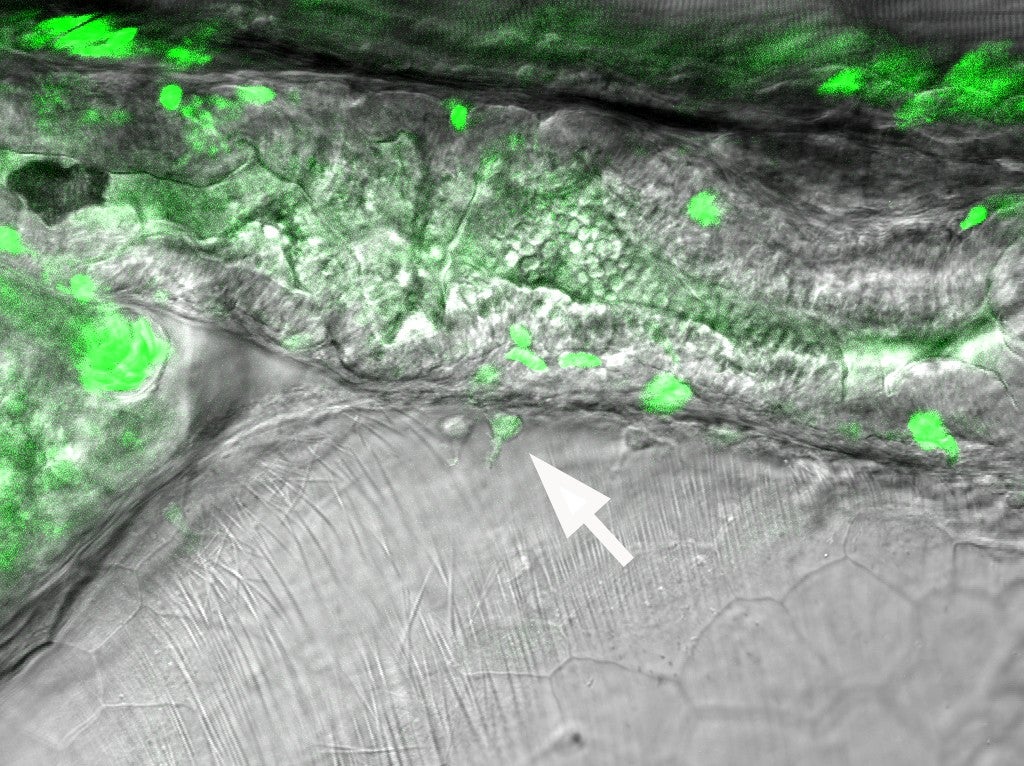The evolutionary origin of paired limbs
June 14, 2023National University of Singapore (NUS) biologists contribute to a multi-national study to solve a longstanding controversy in evolutionary biology on how paired limbs originated.
In evolution, the transition of vertebrates from water to land was made possible by the development of paired appendages or limbs that also served as templates for arms and legs in humans. These paired appendages are homologous to the paired fins of aquatic vertebrates. Ancient fish, however, only had unpaired or median fins. Whether paired fins and limbs evolved from these unpaired fins in ancestral fish or originated de novo remains a mystery in biology. German scientists in the 19th century in fact had proposed that paired fins had originated from bony gill arches rather than an unpaired fin, but this remains highly controversial and this debate persists until today.
An international research team involving Associate Professor Christoph WINKLER from the Department of Biological Sciences, NUS provides evidence that paired fins indeed evolved from single unpaired fins in ancestral fish. This provides important new insights into the evolution of paired appendages and settles a long-lasting debate. The research was led by Assistant Professor Tom CARNEY from Nanyang Technological University and Associate Professor Christian MOSIMANN from the University of Colorado.
This study was published in the journal Nature.
The authors first performed a series of cell tracking experiments to identify the origin of fin cells and analyse fin development in a zebrafish embryo. This revealed that one particular unpaired median fin, the pre-anal fin fold (PAFF), is formed by an invasion of cells migrating from a bilateral structure in the early embryo, the so-called lateral plate mesoderm, or LPM. These findings were completely unexpected as other unpaired fins had previously been shown to have an entirely different origin. The bilateral LPM, on the other hand, was earlier reported to only give rise to paired fins. The authors thus speculated that the PAFF might possibly represent an intermediate that had persisted through evolution, reflecting a transition from an unpaired to a paired fin.
Genetic experiments then demonstrated that manipulating the bone morphogenetic protein (BMP) cell signalling pathway resulted in a split of the single PAFF into two paired fin folds, thus supporting their hypothesis that the PAFF is an evolutionary relict that in principle is capable of generating paired fins. However, it remains unclear if the PAFF is an exclusive feature of the zebrafish model or if this special fin and its bilateral LPM origin are also found in other widely distributed aquatic species. The latter would confirm the evolutionary significance of an LPM derived median fin and explain the origin of the paired appendages. To solve this question, the Carney and Mosimann groups teamed up with several laboratories around the world working on organisms as diverse as lampreys, paddlefish, goldfish, frogs and sharks. At NUS, research fellow LE Yao from Prof Winkler’s laboratory generated transgenic medaka fish to fluorescently label the LPM cells and visualised their migration to the median unpaired PAFF. Similar to the other species analysed, the medaka fish showed LPM-derived cells in the PAFF. The findings therefore strongly support the hypothesis that in evolution, the LPM adopted an already existing genetic network that was previously used to generate single median fins. Over several millions of years of evolution, this genetic programme was then modified in such a way that a modulation of BMP cell signalling allowed splitting a single fin fold into two bilateral paired fins. Hence, the paired appendages that we see today in land-living vertebrates, including humans, are derived from paired fins that initially stemmed from the unpaired median fins of ancient fish. This work thus uncovered an important new role of the lateral plate mesoderm in developing embryos, which is still not well understood.
Prof Winkler said, “This international consortium of experts coming from various fields of developmental biology and working with very different animal models as well as non-model species, provided unique insights into one of the most fundamental questions in evolutionary-developmental biology research. How paired limbs evolved had been unknown and controversial. The current study settles much of this discussion. It also highlights an important function of the lateral plate mesoderm, a tissue that has long been neglected in research and in textbooks.”
“I am convinced that future studies will potentially reveal many new exciting aspects of this enigmatic embryonic tissue. I expect many more important results coming from the analysis of the lateral plate mesoderm, not only for evolutionary-developmental biology research but also for human health-related studies,” added Prof Winkler.

Cell originating from the lateral plate mesoderm (labelled with a green fluorescent reporter; marked by arrow) enters the median PAFF fin in a medaka fish embryo. [Credit: Le Yao]
Reference
Tzung KW, Lalonde RL, Prummel KD, Mahabaleshwar H, Moran HR, Stundl J, Cass AN, Le Y, Lea R, Dorey K, Tomecka MJ, Zhang C, Brombacher EC, White WT, Roehl HH, Tulenko FJ, Winkler C, Currie PD, Amaya E, Davis MC, Bronner ME, Mosimann C*, Carney TJ*, “A median fin derived from the lateral plate mesoderm and the origin of paired fins” NATURE DOI: 10.1038/s41586-023-06100-w Published: 2023.


